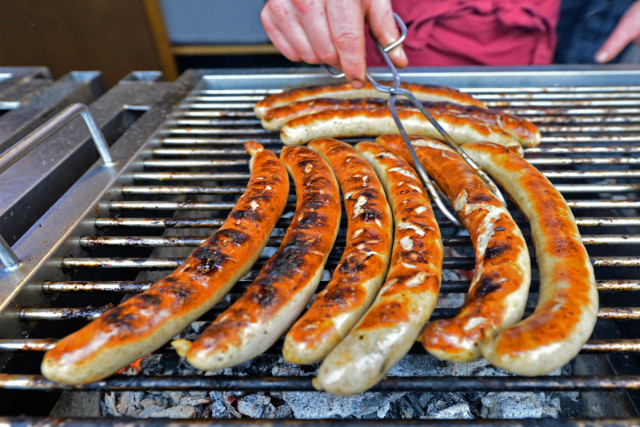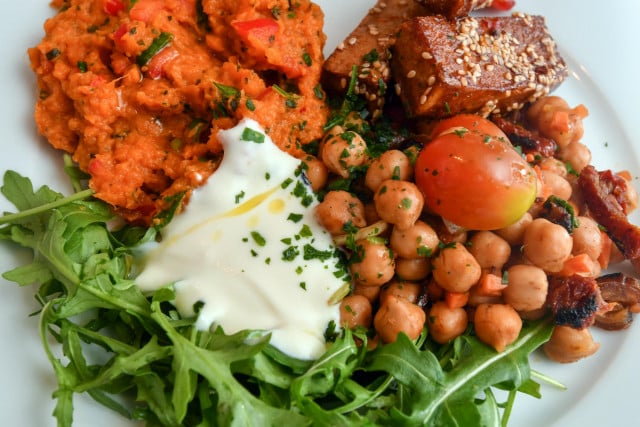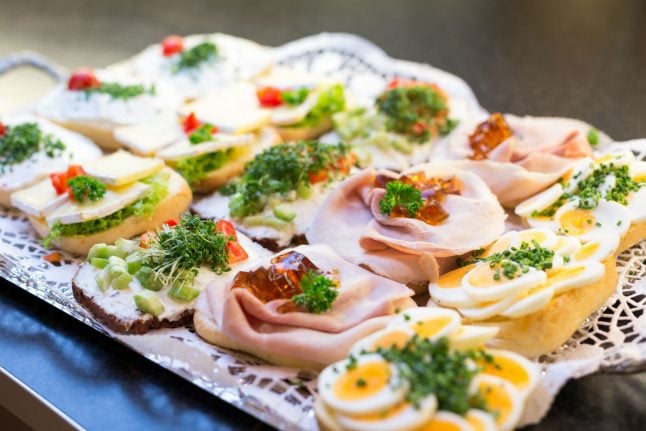Us Brits haven’t got the best reputation when it comes to food. It’s pretty common in the UK to hear people flippantly talk about “European dining culture” as the foil to our own. “How European”, we’ll comment, on having a late dinner or eating al fresco. It’s not just the culture, however, but the food, too, that we tend to prefer to our own.
We long ago gave up the notion that any of our national cuisine trumps a really good pizza, and as a result, the UK’s high streets are lined with Italian, French, Greek and Spanish restaurants. German food, however, is the curious exception to this rule, and for all our differences, when it comes to food Germany might have more in common with the UK than its nearer neighbours.
Just as you’d be hard pressed to find a Sunday roast abroad, you would also have trouble finding a German restaurant on the average British high street. In America, German restaurants are closing by the dozen, and in London and Berlin alike, the food scene tends to eschew native food for dishes from far-flung corners of the globe.
Both at home and abroad, it seems that traditional German food is less popular than ever. Is it possible that schnitzel, bratwurst and sauerkraut are doomed to one day end up as relics?

Bratwurst being cooked on a grill in Erfurt. Photo: DPA
There is, of course, huge variety in the dishes considered traditionally German, but “Aufschnitte” is a word that captures the essence of German dining culture rather nicely. Its literal translation is “cold cuts”, but the term can also be used more generally to describe an entire meal made up of various bits and bobs: cheese, bread, meat and so on. Traditionally, Germans tuck into a hot, hearty meal at lunchtime and eat a smaller one at dinner, so Aufschnitte would naturally be eaten in the evening.
Its components are typical of traditional German fare, which relies heavily on meat and stodgier foods like potato and bread. It’s a cuisine which food historian Ursula Heinzelmann believes fell out of fashion post-war, a time when “It just wasn't terribly cool to be German,” she told Deutsche Welle.
“With the economic recovery, which set in quite soon after the war, people could travel, they could afford imported food, and even when I grew up in the 60s and 70s, it always felt like you'd much rather be Italian or French than German. So you ate your coq au vin, your camembert, your pizza, and your mozzarella, almost pretending that Berlin was actually situated on the Mediterranean.”
The same remains true today, with German food struggling against the popularity of street food and the need for cuisine to look Instagram-ready. But it’s not just history that’s played a role in the decline either. Today, changing tastes and dietary preferences are steering more people than ever away from meat, dairy products and carbohydrates; the elements on which traditional German food depends.
With over 1,200 different types across Germany, it may be a little while until we see the end of the wurst, but it’s certainly headed in that direction, with consumption of meat having steadily declined in the country since 2011. Last year saw the steepest drop yet, with meat production in German slaughterhouses falling 2 percent in 2017.
SEE ALSO: Currywurst – the Berlin dish that wouldn't exist without the British
Germany: an unexpected vegan paradise
To critics of the hipster vegan joints that seem to multiply every day in Berlin, it looks a lot as though outside influence from the new-age vegan movement still sweeping Western Europe has quashed traditional German cuisine one flat white at a time. But the concept of “natural” eating actually goes all the way back to German Nazism, where a push towards organic diets free of refined sugars and lower in meat intake aligned with ideals of a strong and healthy “master race”.
The political reasons for the modern fascination with veganism, vegetarianism and “natural” foods are of course radically different, but the idea is far from new – and gaining traction all the time. In 2016, Germany was responsible for the launch of 18% of all vegan food products worldwide.

A vegan dish of tofu served at a Thai in Brandenburg. Photo: DPA
It might be bad news for truly traditional German food, but reinvention may stave off extinction. Of the 18% of vegan products launched in Germany, a significant number were meat substitutes, indicating that Germans might not be ditching tradition but simply reinventing it, swapping out the meat in traditional dishes for plant-based versions.
In Berlin, vegan currywurst and even vegan kebabs – themselves an adopted Turkish invention – are aplenty, and from Dortmund to Stuttgart and Hanover, vegan street food festivals are growing year on year. The meat might be on its way out, but traditional German cuisine may find itself able to survive like everything else: by adapting.
SEE ALSO: The Local's meaty vegan guide to Berlin
That means fusion foods and reinterpretations of old classics; a strategy that has so far proved successful for chefs like the Suhring twins and restaurants like Kreuz + Kummel in Berlin. The concept of “tradition” in German food is changing, but that’s not necessarily such a terrible thing. Like the UK, modern German cuisine is a patchwork influenced by a vibrant mix of cultures and a growing concern for sustainable healthy eating, and it’s no use fighting against these natural changes.
The bratwurst as we know it may survive many places outside of Oktoberfest, but it’s likely that fusions and twists on old classics will dominate as taste buds continue to change and develop. So next time you sit down to some Aufschnitte, make sure to check your plate for any new additions before wishing your table mates Guten Appetit.



 Please whitelist us to continue reading.
Please whitelist us to continue reading.
Member comments